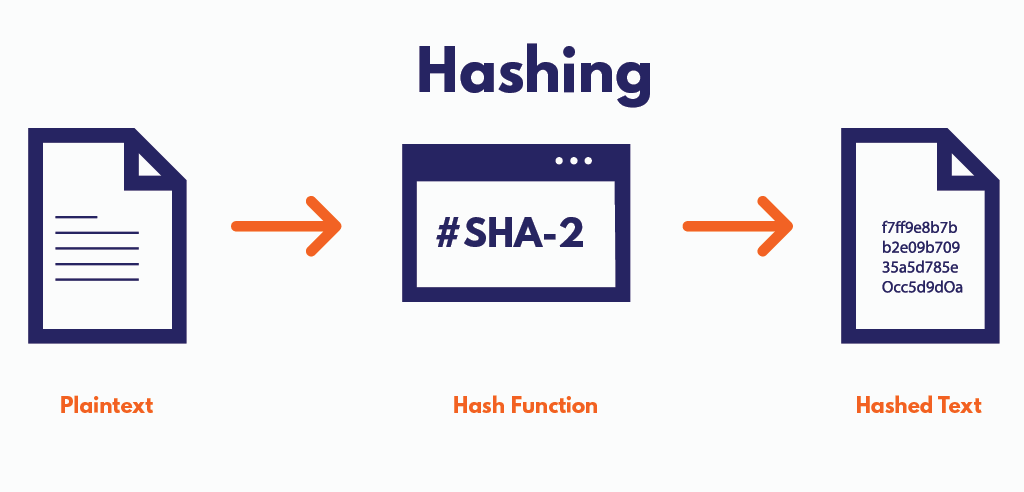A hash helps secure blockchain technology by creating a unique identifier for each block. This hash is a fixed-size alphanumeric string generated by running the block’s data through a cryptographic function, making it tamper-proof and ensuring data integrity.
Blockchain technology has revolutionized the way transactions are verified and stored. Its decentralized and transparent nature has made it a preferred choice in various industries, from finance to healthcare. At the core of its security lies the concept of hashing, which plays a crucial role in safeguarding the integrity and immutability of data within the blockchain.
Understanding how a hash helps secure blockchain technology is essential to comprehend the underlying security mechanisms that make blockchain a reliable and trusted platform for conducting transactions. We will delve into the significance of hashing in blockchain security, exploring its impact on data protection and the prevention of unauthorized tampering.
What Is Blockchain Technology?
Blockchain technology was introduced with the emergence of the first cryptocurrency, Bitcoin. Blockchain is a digital data ledger distributed among numerous nodes (computers).
The data stored on the blockchain is immutable. None of the nodes has control to overwrite, change, or delete the data on the blockchain. As new transactions take place the data about them is validated and recorded in this ledger. Blockchain-based networks are trustless as they are fully automated and have various ways to prevent spam attacks and frauds. On top of decentralization, the data is secured via encryption. The information is available in a hashed form that doesn’t allow anyone to decrypt it and get the original input.
Hashing in Blockchain
Hashing is crucial for maintaining the integrity of transactions on public and private blockchains. it ensures that data is secure and unalterable, which helps protect against unauthorized changes. Hashes are used in various parts of a blockchain system, with each block header containing the previous block’s hash to ensure the integrity of the data as new blocks are added.

How Hashes Secure the Blockchain?
The cryptographic hash function is the core of blockchain technology, an important tool that enables data transformation into digestible or fixed-length hash values. This cryptographic hashing algorithm ensures that even minor changes in the input data produce different hash values. This unique digital imprint, an important part of blockchain technology, increases the security and integrity of data.
Let’s take a deeper look into the fundamentals of hashing in blockchain.
Immutability
It becomes practically impossible to change any information in a block once it is added to the blockchain without altering all subsequent blocks. This is so because every block’s hash is a unique representation of its data. The blockchain offers a robust layer of security, as it takes a lot of computational power to change the hash of a block and all linked blocks.
Tamper Resistance
A strong hash function should be highly unlikely to obtain the same hash value when two different inputs are used. This is known as tamper resistance. This ensures that every block in the context of a blockchain has a distinct equivalence. The blockchain’s integrity may be jeopardised if collisions are frequent since they could result in possible vulnerabilities when various sets of data yield the same hash.
Consensus Protocols
Consensus mechanisms, like Proof of Work (PoW) or Proof of Stake (POS), are often used in blockchain networks to validate and append new blocks to the chain. A crucial component in these mechanisms is hash functions. For example, in PoW, miners compete to discover a hash value that meets specific standards. This computational problem maintains the network’s security and decentralisation in addition to including new blocks.
Private keys and digital signatures
In blockchain public-key cryptography, hash functions are widely used. Hash functions are implemented to generate public keys and digital signatures, which gives participants a secure way to transact and verify asset ownership. This cryptographic approach provides an additional line of defense against fraud and illegal access.
Common Hashing Algorithms in Blockchain
Different blockchains use different hashing algorithms. They have the same purpose — protecting the on-chain data.
SHA-256
The algorithm used in Bitcoin and Ethereum is known as SHA-256. The name stands for Secure Hash Algorithm 256-bit. SHA-256 is the successor of SHA-1.
SHA-256 was coined by the US National Security Agency in 2002. SHA-256 applies a pretty simple encryption round, repeated 64 times. The alleged Bitcoin creator Satoshi Nakamoto could resort to using SHA-256 as this algorithm has a solid reputation while being not too complex.
Scrypt
Another common hashing algorithm is Scrypt. It was created in 2009 as a function for derivation of a password-based key. Soon, it was used for validation of Litecoin transactions. Another big cryptocurrency using Scrypt is Dogecoin.
As Scrypt was thought of as an algorithm preventing hardware spam attacks, it naturally became a strong ally for cryptocurrencies. More than that, initially, Scrypt was considered as an anti-ASIC algorithm. Nevertheless, ASIC producers found a way to modify their devices for LTC mining.
CryptoNight
This algorithm was created directly as a Proof-of-work element. CryptoNight was developed in response to the inability to continue mining BTC via the regular CPU devices. CryptoNight allowed CPU owners to mine cryptocurrencies on a relatively large scale. The most notable cryptocurrency using CryptoNight isMonero (XRM), a private-focused cryptocurrency.
Ethash
Ethash was developed to make Ether ASIC-resistant. It used an architecture similar to Scrypt but it required more memory to make mining via ASIC more or less worthless. Ethash is still used for the Ethereum Classic (ETC) mining. It is possible to mine this coin using GPUs. Ethash is not used outside the Ethereum mining.
X11
X11 is a complex algorithm comprised of 11 different algorithms combined into the whole. Just like the rest mentioned algorithms, it was coined for the PoW-based cryptocurrencies. X11 consumes less energy than most algorithms used in the PoW-based cryptos. The most known cryptocurrency using X11 is Dash.
Conclusion
Hashing, viewed as the core component of blockchain, cannot be ignored due to its uses in achieving data integrity and safety—therefore, efficient data management. Blockchain implements immutability and an increased level of protection by first transforming the data into fixed-size unique hashes. Hashing has some obstacles to overcome, such as scalability constraints, quantum computing threats, and environmental issues from high electricity consumption in mining methods.
Despite these challenges, the hash function in the blockchain system is still indisputable. Blockchain app development companies are committed to self-improvement, and they work tirelessly to optimize the technique to keep abreast of the evolving needs of blockchain technology. Over time, the imperative to strive for optimization has enabled hashing to maintain its standing as the foundation of information security and innovation, bolstering the resiliency of blockchain networks around the world.
Frequently Asked Questions For How Does A Hash Help Secure Blockchain Technology
How Does A Hash Contribute To Blockchain Security?
A hash in blockchain technology helps secure data by converting it into a fixed-size string of characters, making it tamper-proof. It ensures the integrity of data and prevents unauthorized access or modification, enhancing the overall security of the blockchain network.
What Role Does Hashing Play In Preventing Data Tampering?
Hashing in blockchain ensures data integrity, making it nearly impossible for attackers to alter transaction information without detection. It acts as a digital seal, uniquely representing each piece of data and providing a secure foundation for the blockchain’s distributed ledger system.
Can A Hash Be Reversed To Access Original Data?
No, a hash is a one-way function, meaning it cannot be reversed to obtain the original data. This irreversible nature of hashing technology adds a layer of security to blockchain systems, safeguarding sensitive information from unauthorized access and maintaining data integrity.
Conclusion
To summarize, the implementation of hashes in blockchain technology plays a crucial role in ensuring its security. By providing unique and deterministic outputs for every input, hashes create a reliable system that guards against tampering with data and enhances the trustworthiness of transactions.
With its ability to swiftly verify data integrity, the use of hashes contributes to the continued growth and adoption of blockchain technology in various industries. Embracing the power of hashes is crucial in safeguarding the future of decentralized networks.

